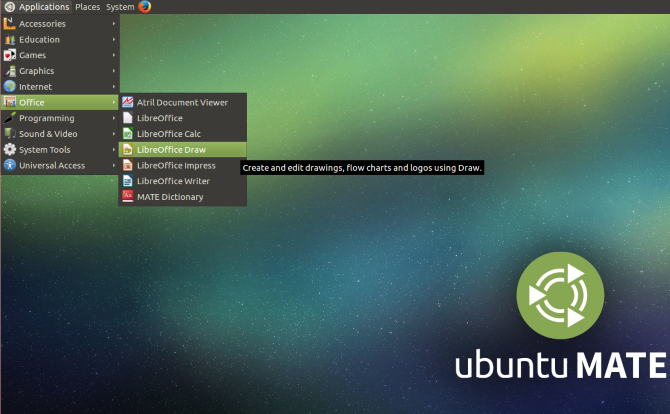When you're looking for a new Linux distro to install, you notice two things: the name, and the desktop environment.
A quick browse shows obvious differences between Ubuntu, Fedora, Linux Mint, Debian, openSUSE, and many other variants of Linux. But why are there so many Linux distributions and what is the difference between them?
The 5 Key Differences Between Linux Distributions
Looking for a new Linux distro? At some point you'll have wondered why there are so many different distributions, especially if they're all Linux anyway.
You may know that Windows 10 has multiple editions, but they aren't marketed as entirely separate operating systems. Meanwhile, macOS has a single variant (at least for the desktop). So why are there so many different Linux distributions?
Development of Linux distributions is thanks to various collaborative and yet disparate groups. Over the years since the Linux Kernel was first released, this approach has led to the creation of different distros.
At the core, it is Linux. But you will notice some differences between Linux versions, specifically:
- Desktop Environments
- Package managers
- Display servers
- Goals and aims
- Open source philosophy
But how much do these differences really matter?
1. Desktop Environments
Most distributions seem to differ simply based on which desktop environment they use.
For example, Ubuntu offers several desktop environments depending on which flavor you choose. You can have:
- Ubuntu (the main version includes the GNOME desktop)
- Kubuntu (KDE)
- Lubuntu (LXQt)
- Ubuntu Budgie (with the Budgie desktop)
- Ubuntu MATE (the classic Ubuntu desktop)
- Xubuntu (Xfce)
Other distros have a more modest selection of desktops available, however, often offered as "spins" that contain different desktop environments. An example distribution that does this is Fedora. Meanwhile, you'll find the macOS-inspired Pantheon desktop on Elementary OS.
Check our guide to the best Linux desktop environments to learn more about these differences.
2. Package Managers and Other Technologies
The people behind each Linux distribution can choose what software they include, such as file managers and package managers.
Distribution leaders have these options because each category of Linux software can have multiple applications.
For example, several file managers are available for Linux, such Nautilus and Konqueror, each offering a different way to browse files.
Another example is Linux package managers. Various methods for installing software are included with each Linux distribution, but they have an underlying package manager.
On Debian-based distros such as Ubuntu and Linux Mint, dpkg is the choice, accessed via the apt dependency resolver. For CentOS, RPM is the package manager, subject to commands using yum.
3. Different Display Servers on Linux
Under the hood on Linux you'll find a selection of tools, applications, processes, and servers that determine how it runs.
A key example of this is the display server. This software coordinates data between the computer hardware and the display, enabling the user to interact with the graphical user interface (GUI).
Historically, the X.Org Server has been most commonly used. Various alternatives are available, however, such as Mir, and SurfaceFlinger which is used on Android (which uses the Linux Kernel). The Wayland display server is seen as the future on Linux, with most popular distros adopting it.
4. Goals and Aims
Some distributions exist because they like some aspects of an existing distro but wish to replace some software packages. Meanwhile, Linux distributions can differ in their aims. For example, Linux Mint is based on Ubuntu, but contains different system tools, desktop environment, and a minty-green theme. Its primary aim is to provide a simple stepping on point for Windows and macOS users to start using Linux.
Similarly, Debian aims to provide an extremely stable distribution (and therefore contains older software).
Beyond the realm of universal distributions, some Linux projects have specific purposes. For example, gaming distros like Steam OS, or multimedia distros like Fedora Design Suite.
5. Open Source vs. Proprietary Philosophy
While GNU/Linux is perhaps the most famous open source project, not all distros are 100 percent open source.
Project leaders have differing stances on open source, which can be a deciding factor for open source purists.
As an example, Ubuntu doesn't have an issue with including proprietary software in its repositories. You'll find the Steam gaming client is easily available, while graphics drivers from AMD and Nvidia can be installed. Fedora, conversely, has a strong open source policy that prevents it from including any proprietary software in its repositories.
Of course, at the end of the day you can do whatever you want with your chosen Linux distro. Regardless of the distribution project's policies, there is no block on what you install.
In short, while many Linux distributions might have lofty aims of open source compliance, not all are open source.
What All Distros Have in Common: the Linux Kernel
Despite these differences, all Linux distributions are still considered to be Linux: but why?
They all have at least one thing in common: the Linux kernel. This piece of software is the core of the operating system, bridging the software that you interact with (e.g. the browser) with the underlying hardware that does all the work. It also includes many device drivers to provide support for whatever hardware you may be sporting.
That's why it's important to keep the kernel updated or to compile the kernel yourself if you have special requirements. Developers around the world contribute to the kernel, along with its creator, Linus Torvalds.
Use Linux's Differences to Choose the Right Distro for You
Knowing how distributions differ from each other can contribute to making or breaking your Linux experience.
Not all distributions are meant for everyone, so choose the one that is most geared towards you and your preferences. There's absolutely nothing wrong with giving any distribution a try to get a good idea of what it's about.
Not sure where to start? Check our round up of the best Linux operating systems.


